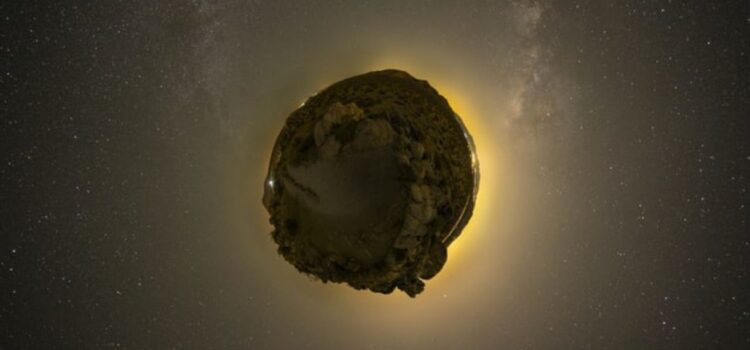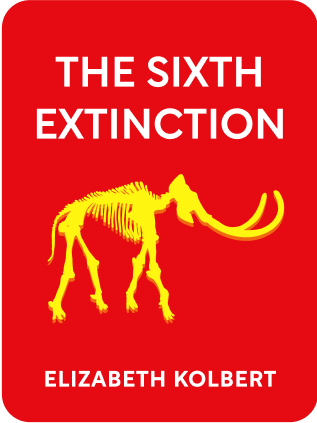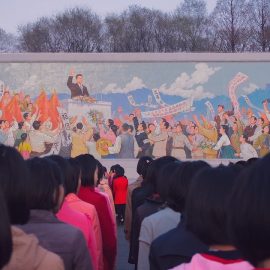

This article is an excerpt from the Shortform book guide to "The Sixth Extinction" by Elizabeth Kolbert. Shortform has the world's best summaries and analyses of books you should be reading.
Like this article? Sign up for a free trial here .
Who is Walter Alvarez? How did he come to the conclusion that it was an asteroid strike that wiped out the dinosaurs 65 million years ago?
Walter Alvarez was an American geologist who is best known for his asteroid strike theory. In the late 1970s, Alvarez discovered a large amount of iridium in the rock layers in the Gola Del Bottaccione gorge and theorized that there was an asteroid strike 65 million years ago.
Keep reading to learn about Walter Alvarez’ asteroid strike theory.
Walter Alvarez’s Asteroid Strike Theory
In the late nineteen-seventies in Italy, American geologist Walter Alvarez discovered traces of the asteroid that ended the Cretaceous period, causing the fifth mass extinction, which wiped out 75% of all species.
He was studying rock layers in the Gola Del Bottaccione gorge outside the town of Gubbio, Italy, which is north of Rome. The region once lay at the bottom of the sea. The remains of marine animals built up through millennia, eventually creating the Apennine Mountains and elevating limestone cliffs.
Between the diagonal bands of limestone reflecting different time periods, Alvarez saw a thin layer of clay that contained none of the marine lifeforms seen in the limestone layers below or above it. Something had wiped out the foraminifera—tiny creatures with calcite shells that fossilize—below the clay layer; when forams appeared later in the limestone layer above the clay, they were different species and much smaller. Alvarez determined that the larger forams seen below the clay layer had vanished at the time dinosaurs were known to have died off (the End Cretaceous period).
Further, Alvarez and his father Luis, a physicist at UC Berkeley, tested the samples from the clay layer and found it contained a huge amount of iridium, a chemical element rare on the surface of the earth but common in meteorites. Similarly, the Alvarezes found high levels of iridium in samples of late-Cretaceous clay in limestone cliffs in Denmark and from the South Island of New Zealand.
Finally, after ruling out numerous possible explanations for the astronomical iridium levels, they theorized that 65 million years ago, a six-mile-wide asteroid struck the earth. It exploded on impact, releasing energy equivalent to more than a million H-bombs. Dust including iridium spread around the earth, creating darkness and causing temperatures to plunge. There was mass extinction.
In 1980, Walter Alvarez published his asteroid strike hypothesis in an article in Science titled “Extraterrestrial Cause for the Cretaceous-Tertiary Extinction,” which generated excitement in the science community and the popular press. However, many paleontologists rejected the theory, which came from outside their discipline (from geology/physics), still believing in the uniformitarian theory of gradual extinction.
More Evidence Backs Walter Alvarez
As far back as the mid-1800s, scientists had noticed a large gap in fossil records of tens of millions of years between plants and animals found in rocks from the late Cretaceous period and the start of the next period, the Tertiary.
For instance, late-Cretaceous sediment contained remains of numerous species of belemnites, squid-like creatures, but there weren’t any in more recent deposits. The same was true for sea creatures called ammonites, which created spiral shells.
But uniformitarians couldn’t imagine why these would disappear suddenly—so up to 1980, when Walter Alvarez published his ground-breaking paper, most scientists continued to attribute the disappearances to an incomplete fossil record. Some even argued that a slow, continuous crisis led to mass extinction.
However, the Alvarezes found yet more evidence for the asteroid extinction hypothesis:
- Grains of “shocked quartz,” which develop from bursts of high pressure like that of nuclear test sites and impact craters, were found in 1984 in a layer of clay from the Cretaceous-Tertiary boundary or K-T in Montana.
- Signs of a giant tsunami were found in a layer of End Cretaceous sandstone in South Texas, which could have been produced by an asteroid’s impact. Similar signs were found in sediment cores from the Gulf of Mexico collected by oil drillers.
- Finally, there was a hundred-mile wide crater beneath the Yucatan Peninsula. It had been found in the fifties by an oil company and was thought to be the result of an underwater volcano. Since it had nothing to do with oil, it was forgotten until the Alvarezes obtained crater core samples from the company in 1991. The samples contained a layer of glass at the K-T boundary (rock that had melted and rapidly cooled). They believed this was the asteroid’s impact point—it became known as the Chicxulub Crater or “Crater of Doom.”
Based on the mounting evidence over the eleven years since Walter Alvarez published his impact theory, uniformitarian paleontologists finally began changing their minds about sudden mass extinction. Also since then, dozens more sites, including one in suburban New Jersey, have been found showing an iridium layer; you can find ammonite fossils below it but not above it.
The Asteroid’s Effects
According to Walter Alvarez’s impact theory, the worst effect of the asteroid was the dust rather than the impact. The asteroid theory has since been tweaked and the date revised to 66 million years ago, but scientists generally agree that this is what happened:
- The asteroid was traveling at 45,000 miles an hour when crashed into the Yucatan Peninsula.
- A scorching cloud spread across North America, vaporizing everything.
- When the asteroid struck, it launched debris amounting to more than 50 times its own mass. The particles illuminated the sky and generated intense heat as they fell back to earth and cooked its surface.
- The sulfur-laden dust blocked much of the sunlight.
- An “impact winter” or prolonged cooling of the earth followed.
- Non-avian dinosaurs were eliminated. Three-quarters of bird families, two-thirds of mammal families, and four-fifths of reptiles disappeared. Some smaller animals of under 50 pounds survived.
- Marine ecosystems collapsed for several million years. Belemnites and ammonites were eliminated.
- Forests were wiped out.
- It took millions of years for life to achieve the same level of diversity. Species that survived became much smaller.

———End of Preview———
Like what you just read? Read the rest of the world's best book summary and analysis of Elizabeth Kolbert's "The Sixth Extinction" at Shortform .
Here's what you'll find in our full The Sixth Extinction summary :
- How humans have set in motion a sixth mass extinction
- The 5 mass extinction events that occurred over the last 500 million years
- Why human ingenuity might be able to save the human species from extinction






